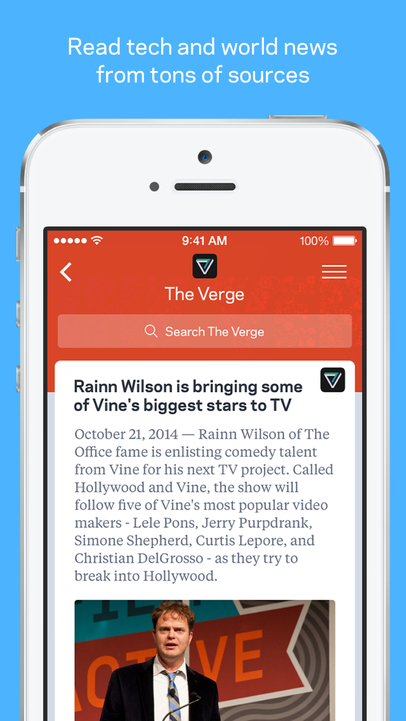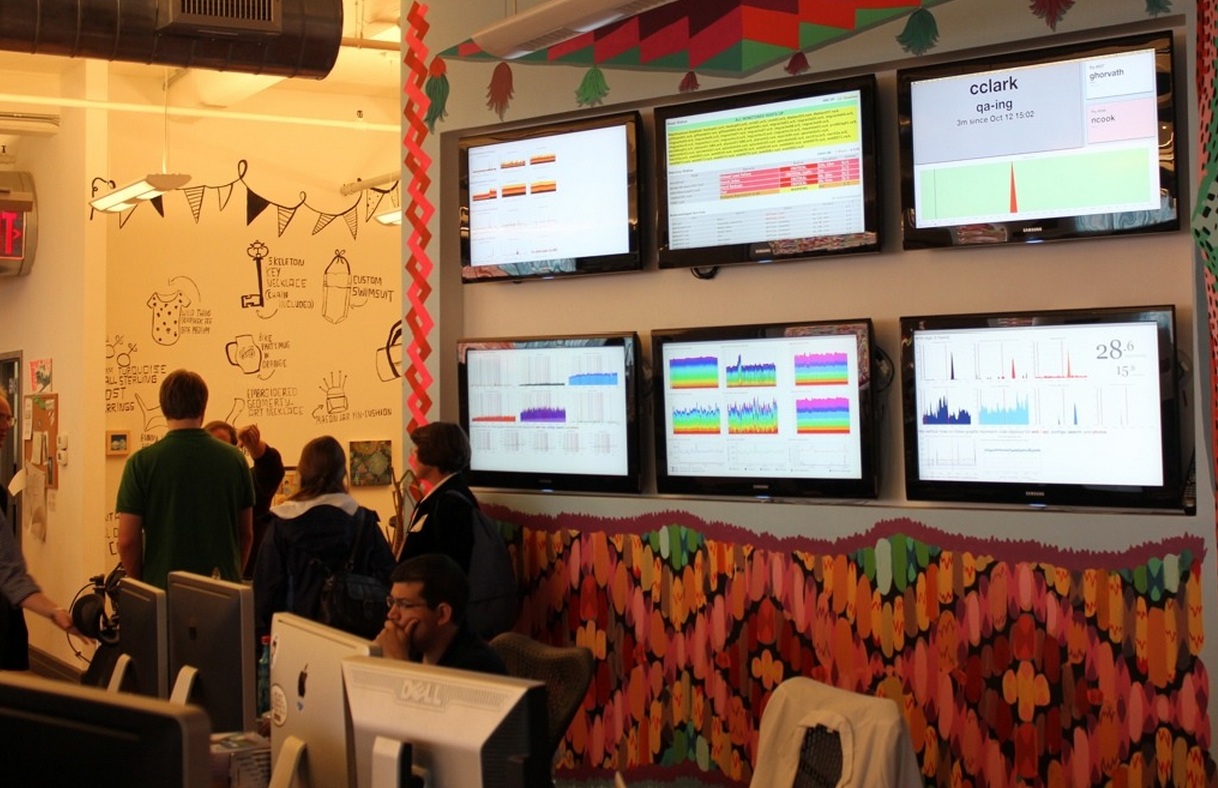Wildcard entered the market recently after months of development. It's an audacious attempt at reimagining the mobile web through a new kind of browser. Given that content organizations are currently trying to define their mobile strategy. Wildard is an intresting case study for anyone who wants to release a content app.
If you haven't heard of Wildcard here's how The Next Web described it.
Wildcard is a free “browser” that presents the Web in an entirely new way. Instead of showing pages, Wildcard presents you with cards for everything, with search as the starting point for discovering content. The main screen shows you trending searches and interesting new content, or you’re able to search for any term you like to get started.

The Entrance
They are grafting a new design paradigm onto the mobile web by putting a lot of work into the problem of mobile web browsing. Khoi Vinh, who is the VP User Experience at Wildcard, recently blogged about their design work that went into the product (emphasis mine).
Cards are easy to recognize but somewhat difficult to define, and so we spent the first several months trying to work through a host of questions about how our vision of cards should behave
Vinh, if you didn't already know, was a Design Director at NYTimes.com, he was the head of design the for The NY Times website. He has also blogged at subtraction.com for years. Where he was a leading voice for the use of grids in web design, a staple for any web design today. Wildcard has had him working for months on a new design concept, the card.
Not only are they working hard on the design of their app, but they are deailing with some hairy technial issues as well. They recently ran a programming contest and they are probably indexing large swaths of content on the internet, again from Vinh:
Each card is a result of figuring out what’s feasible through data collection and indexing at scale—what common characteristics can be found in a vast majority of email newsletter sign-up forms, for instance, and how can we represent that in a consistent way that works with countless brands?
If all this wasn't enough to convince you that they are working on something big, they also have a large head count. From the same blog post:
Wildcard is roughly twenty-five people strong at the moment
Okay, so they have a great team, a great product, a great design, an attention to detail, and a good launch. So, how is Wildcard working out?

Not so well.
What's up?
I want to step back here and say that it's easy to be cynical. It's easy to find these numbers, its easy to make fun of them, but it's just one aspect of a much larger picture. What I think is most helpfull here is to look at what they have done, and hopefully when you launch an app you will have a better understanding of how to make it a success. Also, they aren't done, this is just one lead bullet in their vast arsenal, I am sure.
So, what could have gone wrong?
First lets take a look at what they might be trying to do from 60,000 foot view. It looks like they are trying to build a mobile platform for content. The proposition to content makers probably goes a little liek this. You are a company that has good content, or even just a good website. You built it on wordpress. The mobile web now accounts for over half of yoru traffic? How are you handling that? Retooling from the ground up will be expensive. So, here comes Wildcard. Just add this extra meta data to your website and they can help you out. All you will need to do is direct your users to the Wildcard app.
I don't think we have seen the platform in it's entirety yet, this first app is an attempt to use content disovery as an entry point for the whole platform. But, that is all we have seen so far, so lets see what they are currently offering.
At first glance they are offering a content discovery and curation product. Combined with a mobile browser.
Content discovery and curation is a crowded marketplace. In this market your are competing against Flipboard, Zite, various RSS readers, CNN and other news apps, as well as Twitter and Facebook. That's just the apps store. In general you are also competing with Newsletters, news websites, Magazines, and TV. All of which compete for this exact kind of users attention.
When entering a crowded marketplace, you need to be differentiated, so lets see what the features are.
Wildcard's offerings:
- Trending topics
- Curation
- Nicely designed app
- New patterns and idioms to organize this information
So, what's different. Design, and the new kind of mobile browser. Both of which are good, I don't want to make it sound like those aren't achievments, because they are. The problem is that you have to look at these things in the lense of what a consumer wants, and I am not sure that those two things by themselves will be enough for an app to stand on. They might be better, but the classic VC question is, are you 10x better then the competiton? In this case they might just not be differentiated enough, and less then 10x better at everything else.
What can you learn from this?
The biggest problem you face when building a news app is give the user something they want. Sounds simple, but its not. This problem is larger the Wildcard as well. This mistake is common when developing apps of any kind.
The problem is ascerbated by the fact that most content orgs don't have the same person-power and money that Wildcard does to make chages. Wildcard has runway, they have time to figure it out, a small content outfit doesn't have the same amount of wiggle room. So, the biggest thing you can take away from this is; know your audience before you build.
I don't think anyone can really start at the mass market anymore. Unless you come with a huge budget, which most orgs don't have. Instead you need to find a small niche to enter through and then progressivley expand that.
If I had to make an app at this point, I would make something for 10,000 people. That doesn't mean it would always be for 10,000 people, but with a market of 10,000 people I would try and talk to at least 100 of them. Hopefully, I will make something so good that those 10,000 people won't be able to not pay attention.
Wildcard is an amazing feat, and they will figure it out, but everyone else who doesn't have the same resrouces needs to get creative about how they do mobile. Start small, talk to your users, and give your self the best chance to succeed.


